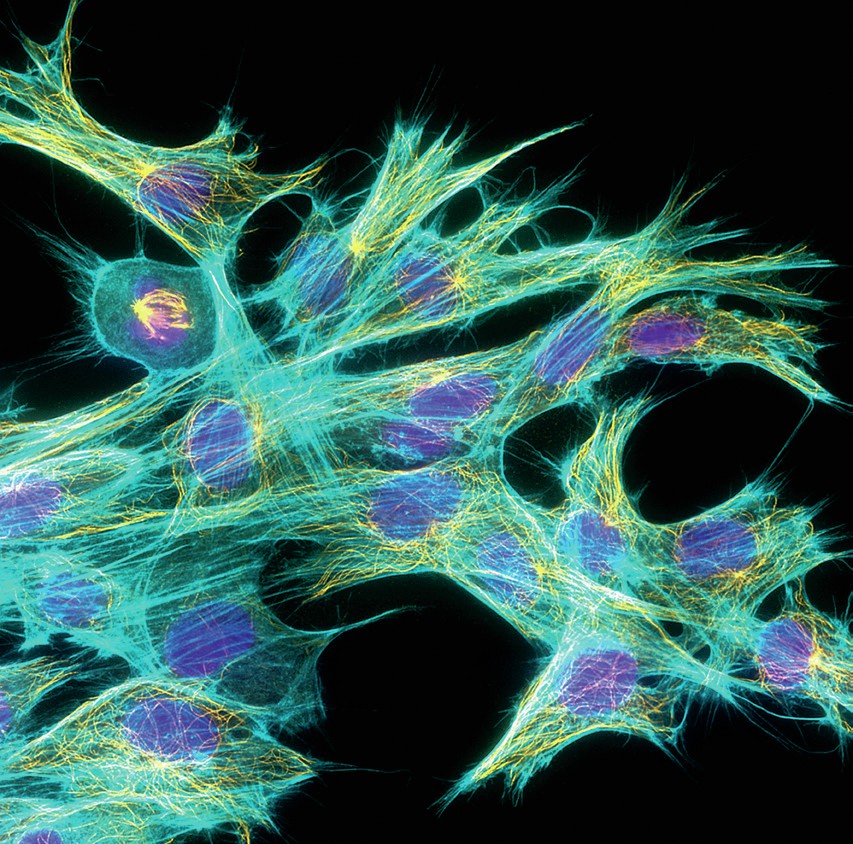
Most students studying biology are familiar with the structure and function of the nucleus and major organelles found in eukaryotic cells. But what surrounds these organelles? The cytoplasm contains a network of protein threads called the cytoskeleton (see Figure 1). In eukaryotic cells, there are three main types of protein thread. Each has a distinct type of protein, shape and distribution within the cytoplasm.
Microfilaments are solid protein threads with a diameter of about 6–8 nm. They contain two actin polymers that intertwine into a structure that resembles a double helix. While microfilaments help to maintain the shape of a cell, their main function involves movement within the cytoplasm. These microfilaments act as railway tracks, along which molecules of the motor protein myosin can ‘walk ’. This allows molecules and structures to be moved through the cytoplasm in an organised fashion (cellular trafficking), as well as cytoplasmic streaming and cytokinesis during cell division in animal cells. You will learn more about the interaction between actin and myosin when you study muscle contraction in the second year of your biology course.
Your organisation does not have access to this article.
Sign up today to give your students the edge they need to achieve their best grades with subject expertise
Subscribe




